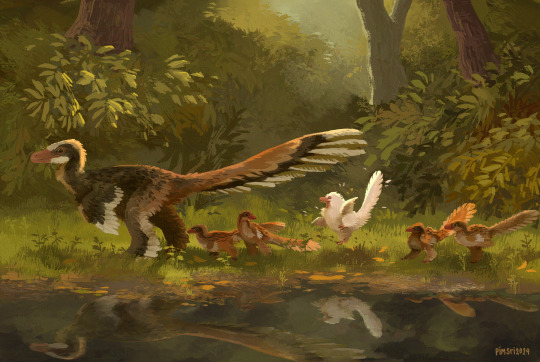#( reflection )
Explore tagged Tumblr posts
Text

#birintiharmelegi#photography#amazing#astethic#lovers#desire#romantic#love#romance#passion#kiss#touch#beautiful#reflection#relationship#connection#affection#soulmates#intimate#intimacy#artists on tumblr#black and white#couple#couple goals
3K notes
·
View notes
Text

(by carlo_wiewaswo)
#vertical#landscape#a#x#watsf#curators on tumblr#water#trees#mountain#carlo_wiewaswo#reflection#lake#Eibsee#Bavaria#Germany#europe
291 notes
·
View notes
Text
Pray in silence and cry heavily if you must. For our tears are filled with unspoken words only God can understand.
#bible#christianity#jesus christ#theology#god#yahweh#christian encouragement#christian quotes#christian living#christian faith#church#word of god#reminder#reflection#bible quote#quotations#quoteoftheday#quotes#life quote#beautiful quote#jesus the messiah#faith in jesus#jesus#self reflecting#just reflecting#god the father#god the creator#holy spirit#holy bible#prayer
151 notes
·
View notes
Text
Knowledge
Space debris: European conference in Bonn
Conference in Bonn:How dangerous is space debris?
01.04.2025
Space debris is getting in the way of satellites and increasing light pollution. A conference in Bonn will seek solutions.
Millions of pieces of debris are orbiting the Earth. This poses dangers – both in space and on Earth. 12 February 2024
Hardly anything looks as pristine as the starry night sky. But what you can't see with the naked eye is that space is a scrap yard – more than a million pieces of space debris are constantly orbiting the Earth. And that is becoming an increasing problem. That is why the European Space Debris Conference, the largest scientific event of its kind, is taking place in Bonn this Tuesday.
What is space debris?
Space debris, space junk or, in technical terms, space debris, refers to all objects that are no longer in use, such as satellites or fragments thereof, that have been created by collisions or explosions. They can be tiny or several metres in size. Space debris orbits the Earth in near-Earth orbits as well as far away.
How much space debris is there?
According to the European Space Agency (ESA), there are more than a million pieces of debris larger than one centimetre racing around the Earth. And this number is constantly increasing as space is being used more and more for commercial purposes.
We now have up to 3,000 objects that we put into orbit every year.
Tim Flohrer, Head of the Space Debris Office, ESA
‘Twenty years ago, we were still at 100 objects per year,’ says Tim Flohrer, Head of the Space Debris Office at ESA.
Around one million pieces of space debris are currently orbiting the Earth. Travelling at speeds of up to 40,000 km/h, they have enormous destructive power. To prevent collisions, a new space radar is to monitor this debris and warn of its presence. 14 October 2020
Most satellites today are commercially operated. "It's no longer what you would think of as science or government use," says Flohrer. Most commercial satellites are owned by just a few operators, such as the Starlink satellites from SpaceX, the space company founded by Elon Musk. The majority of satellites are now used for communications technology. Almost everyone uses data from space satellites, for example in car navigation systems or weather forecasts.
In addition to scientists, more and more private companies are also interested in space travel. 28 March 2025
Why is space debris a problem?
Because space is becoming increasingly congested, collisions between debris and satellites can easily occur. Satellites must therefore be designed to be able to avoid objects. ‘That's part of our daily routine,’ says Flohrer. Even the International Space Station (ISS) has had to perform evasive manoeuvres at short notice to prevent collisions. ‘That means that if the astronauts are asleep, they have to be woken up.’
More and more space debris: Risk of collisions in space is increasing
There are also long-term consequences. If a collision does occur, it does not end with a few dents; the objects involved disintegrate into countless fragments. ‘This is because the speeds and therefore the energies involved are very high,’ explains Flohrer. In the worst case, a situation could arise at some point where certain orbits are so heavily contaminated with space debris that operation can no longer be guaranteed at an acceptable cost.
The dark side of space fascination
What consequences does space debris have for us on Earth?
There is a fear that the black night sky could be brightened by the large number of satellites. So much so that it would no longer be possible to see the stars clearly. This is because all the satellites and debris reflect sunlight, thereby increasing light pollution in space.
Gazing at the starry sky as an experience
What's more, the more we use orbit, the more objects will re-enter the Earth's atmosphere. In the best case scenario, this will be controlled in uninhabited areas, but sometimes it will be uncontrolled, with the associated risks.
That's why we have to build satellites in such a way that they burn up as completely as possible and don't cause damage on the ground. We have to get better at this.
What can be done about space debris?
There are two ways to deal with the problem: prevention or clean-up. The bottom line is that prevention is cheaper. ‘There are standards, there are recommendations, and in some countries there is also binding legislation to prevent the creation of new space debris,’ explains Flohrer. This means that satellites that are no longer needed must either be brought back from orbit in a controlled manner or rendered harmless. How this can be better ensured is one of the topics of the Bonn conference.
In 2024, Japan launched its first wooden satellite into space. It is designed to burn up on re-entry, thus producing less space debris.
News Magazine
It is fascinating that we are able to constantly find new spaces for commercial and scientific use, but then fail to address the negative effects of these developments until the problem becomes so massive that it has a huge impact and even hinders possible future developments. Not least, it is even dangerous for the space in which we operate.
Seriously, deep-sea mining creates the same problem as the problem in our atmosphere. The only difference is that it is invisible to us because we have never learned to observe the deep sea in the same way as we observe space. The deep sea is still unknown and infinitely undiscovered to us. What we can do by mining raw materials is an incalculable risk for the entire oceans. But we will do that too, without restrictions and without thinking about the consequences.
We exploit everything we need like a parasite that ultimately destroys its own livelihood, not in the present but in a future world for future generations.
mod
Satellites, Planet Earth, 1957-2025
#Satellites#Planet Earth#1957-2025#future#space debris#European conference#bonn#germany#Tim Flohrer#Head of the Space Debris Office#ESA#International Space Station (ISS)#The dark side of space fascination#deep sea mining#incalculable risk#like a parasite#humanity#reflection#respect#responsibility#galelry mod#mod studio#rebog#equality
555 notes
·
View notes
Text

#photography#amazing#astethic#lovers#desire#romantic#love#passion#kiss#touch#relationship#reflection#connection#soulmates#affection#artists on tumblr#black and white#couple#couple goals#intimacy#intimate#bw#beautiful#edit#heartbreak#lovecore#breath#heartbeat
45K notes
·
View notes
Text
Curate everything.
Curate your hygiene routine, curate your clothing items, curate your home, curate your habits, curate your nutrition, curate your environment, curate your circles, curate you socials, curate the content you consume, curate your social skills, curate your financial situation, curate your emotions, curate the version of you that shows up in public, curate your hobbies, curate your knowledge.
#reflection#academic weapon#alone but not lonely#becoming her#becoming that girl#creator of my reality#divine feminine#exclusive mindset#feminine energy#high value mindset#that girl#academic excellence#personal excellence#levelling up advice#levelled up mindset#levelling up tips#curated circle#self worth#self care#self love#self improvement#knowledge#exclusivity#curator of my reality#luxury living#motivation#self knowledge#high value woman#high value heaux#women in leisure
11K notes
·
View notes
Text

#birintiharmelegi#photography#amazing#astethic#lovers#desire#romantic#love#romance#passion#kiss#touch#beautiful#reflection#relationship#connection#affection#soulmates#intimate#intimacy#artists on tumblr#black and white#couple#couple goals
768 notes
·
View notes
Text

#photography#amazing#astethic#lovers#desire#romantic#love#passion#kiss#touch#relationship#reflection#connection#soulmates#affection#artists on tumblr#black and white#couple#couple goals#intimacy#intimate#bw#beautiful#edit#heartbreak#lovecore#breath#heartbeat
13K notes
·
View notes
Text

Self-Awareness by Katsuhiro Õtomo
#artificial intelligence#self awareness#android#futurism#cyberpunk#technology#science fiction#robots#reflection#mirror#sci fi#art#transhumanism#drawing#cyborg#robot#singularity#m. c. escher
8K notes
·
View notes
Text

reallocation [ 3 colors ]
7K notes
·
View notes
Text

Baby albino changyuraptor spooked by her own reflection, realizing that she's not like her other siblings.
#changyuraptor#Microraptoria#microraptor#dromaeosaurid#theropod#dinosaur#animal#dinosaur art#paleoart#paleo art#animal art#pimsriart#pimsriart2024#forest#nature#scenery#water#reflection#baby#baby animal#baby dinosaur#chicks
17K notes
·
View notes
Text

Muddy Water, Kichijoji 吉祥寺
3K notes
·
View notes
Text

#photography#amazing#astethic#lovers#desire#romantic#love#passion#kiss#touch#relationship#reflection#connection#soulmates#affection#artists on tumblr#black and white#couple#couple goals#intimacy#intimate#bw#beautiful#edit#heartbreak#lovecore#breath#heartbeat
28K notes
·
View notes
Text



silent reflections; mono lake, california
instagram - twitter - website
#photographers on tumblr#landscape#nature#aesthetic#pastel#sunset#lake#reflection#california#outdoors#pink#sky#original photographers#artists on tumblr#art#leah berman#photography
6K notes
·
View notes
